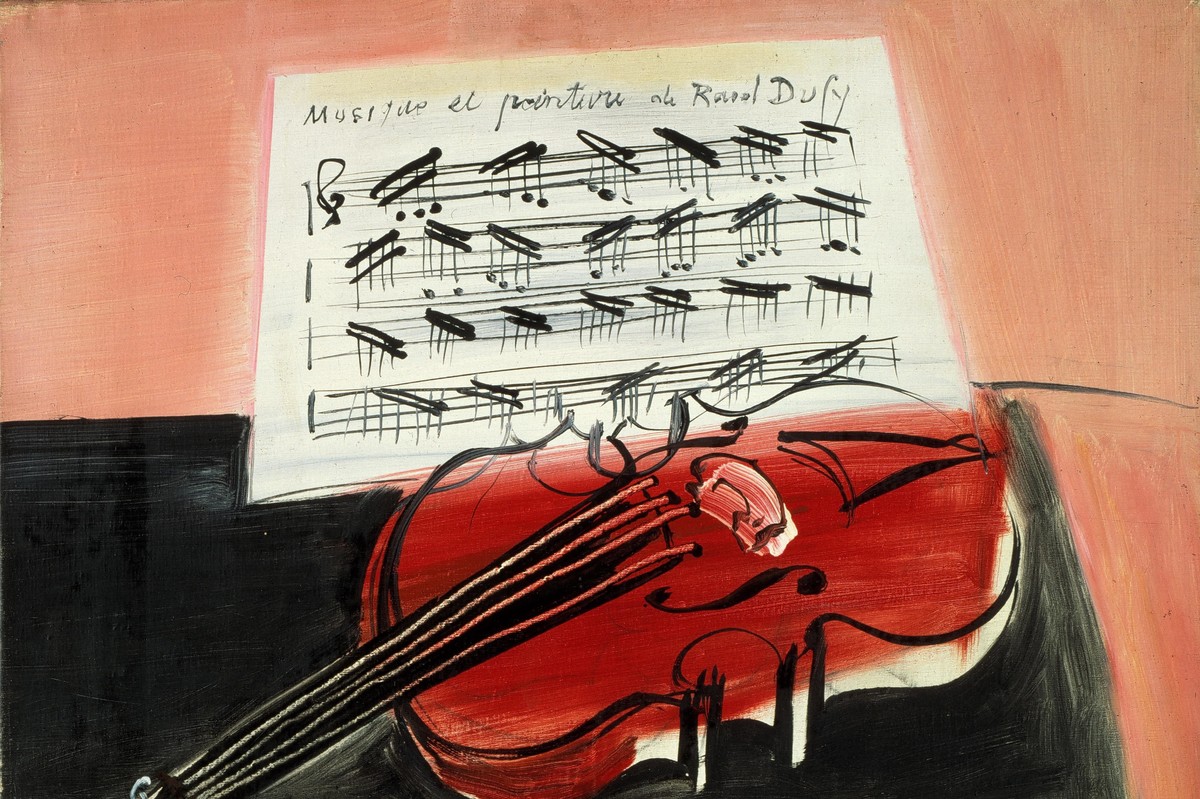Centre Pompidou × West Bund Museum Project
Raoul Dufy: The Melody of Happiness
10 November 2023 - 25 February 2024 | Gallery 3
The "Raoul Dufy" exhibition presented by the Centre Pompidou × West Bund Museum Projectconstitutes a complete retrospective of the oeuvre of a major 20th century artist with an immediately recognisable style. Made up from the considerable collection of the National Museum of Modern Art,which inherited Dufy’s studio collection in 1963, the exhibition does full justice to the extraordinary creativity of the artist.
His highly diverse output was not limited solely to easel painting but also extended to the decorative arts, drawing, engraving and mural decors. 120 including some sixty paintings, are presented in a layout that is both chronological and theme-based, with twelve sections enabling visitors to become acquainted with an artistic trajectory extending over the whole first half of the 20th century.
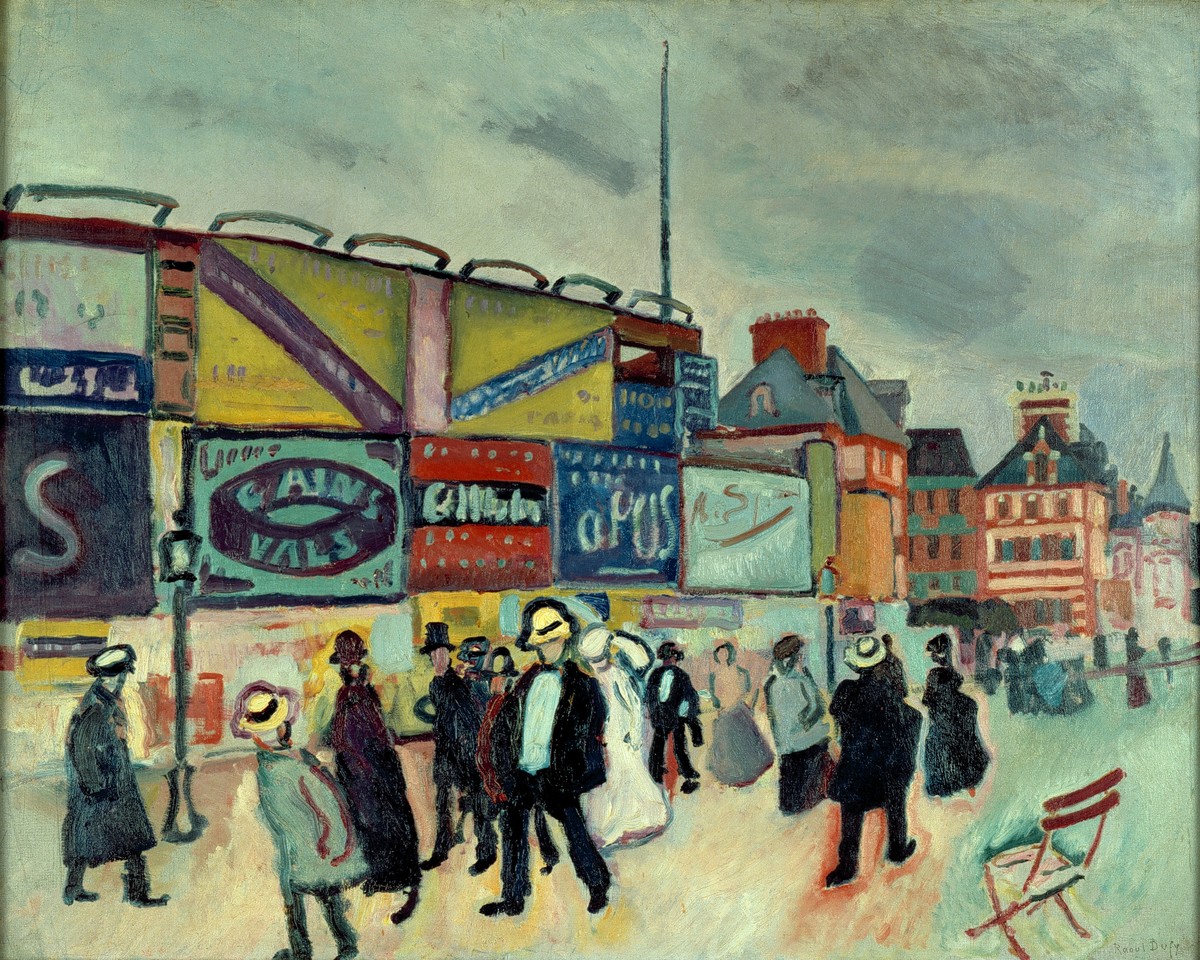
Posters in Trouville, 1906, Oil on canvas, 65 x 81 cm
© Adagp, Paris
Crédit photographique : © Centre Pompidou, MNAM-CCI/Philippe Migeat/Dist. RMN-GP
The exhibition opens with three self-portraits in very different styles, showing the artist at three different periods in his long career.
Born in Le Havre, an industrial port situated in Normandy (in north-west France), Raoul Dufy (1877-1953) first made a name for himself as a landscape painter and a talented heir to Impressionism (section 1).
In 1906 he ranked among the leading painters of the Fauve movement who, breaking with their elders, used vivid colours to render landscapes and portraits with a fast brush (section 2).
Raoul Dufy also tried his hand at Cubism with his friend Georges Braque, painting geometrised views of L’Estaque near Marseille with him in 1908 (section 3).
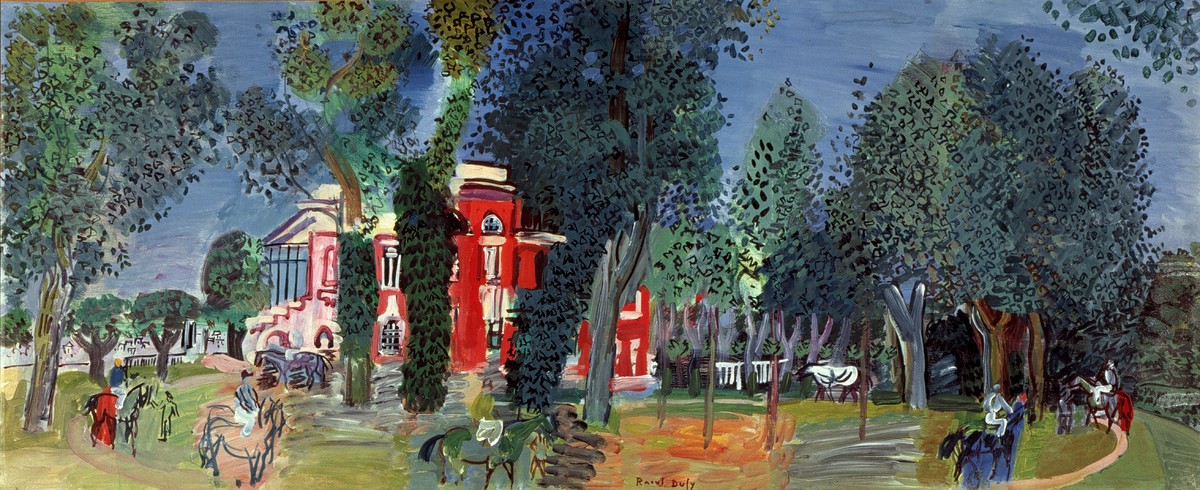
The Paddock in Deauville, 1930, Oil on canvas, 54 × 130 cm
© Adagp, Paris
Crédit photographique : © Centre Pompidou, MNAM-CCI/Jacqueline Hyde/Dist. RMN-GP
Just before the First World War, he developed a passion for folk art which he proceeded to "renovate", notably by illustrating The Bestiary or the Procession of Orpheus by the poet Guillaume Apollinaire with remarkable woodcuts (section 4).
Collaborating with Paul Poiret, the greatest couturier of the day, and with a fabric manufacturer in Lyon for whom he designed innumerable models, Dufy played an active role in the radical renewal of fashion in the 1920s, on which he left his mark (section 5).
It was during this period that the artist created his own style based on dissociating drawing, always very spontaneous, and colour, characterised by freshness and transparency. In 1924, along with the ceramist Josp Llorens Artigas, Dufy began to produce charming earthenware vases and tiles in which his innate feeling for decor produced wonders (section 6).
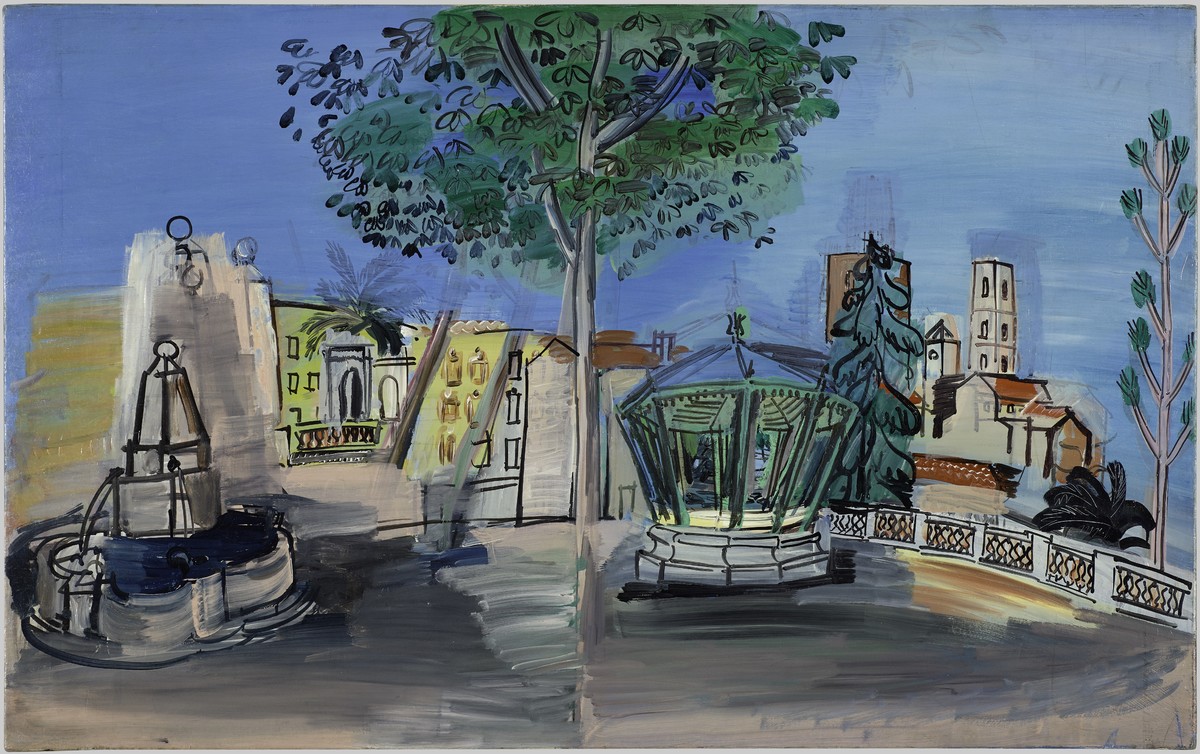
View of Grasse, circa 1930, Oil on canvas, 75.5 × 116.6 cm
© Adagp, Paris
Crédit photographique : © Centre Pompidou, MNAM-CCI/Bertrand Prévost/Dist. RMN-GP
In painting, Dufy’s inspiration focused on coastal scenes which he populated with allegorical figures, combining them imaginatively with horses. In addition, his race course scenes were very successful and highly reputed in his native Normandy (section 7).
A great traveller, the painter’s freeform landscapes recount his stays in Italy, Spain, England and even the United States (section 8).
The portrait genre was also a regular source of inspiration for Raoul Dufy. Beginning in his early days, he often represented his wife Émilienne, adding many models over time. Commissioned in 1930 by a British family, the Kesslers, the monumental portrait of a group on horseback is one of his masterpieces in the genre (section 9).

The Electricity Fairy, 1952 - 1953, 10 lithographs with hand colouring in gouache on paper, 102.5 × 64.5 cm each
The 1930s saw Dufy dedicate himself to grand mural decors such as The Electricity Fairy, commissioned for the International Exhibition held in Paris in 1937. This masterly composition, represented in the exhibition by a lithographic version largely brushed up by the artist, depicts in a large half-natural, half-industrial landscape some hundred scientists associated with the invention of electricity (section 10).
One of Raoul Dufy’s most original themes is the representation of his own studio, notably the one in Impasse de Guelma in Paris at the foot of Montmartre hill, which he kept all his life. This theme is closely linked to that of music, Dufy being an enlightened music lover from a family of musicians (section 11).
The exhibition concludes with the final moving series of "Black Cargo Ships". For this evocation of the port of his hometown, which was almost completely destroyed during the Second World War, Dufy used large blocks of black to represent how our eyes are dazzled by sunlight (section 12).
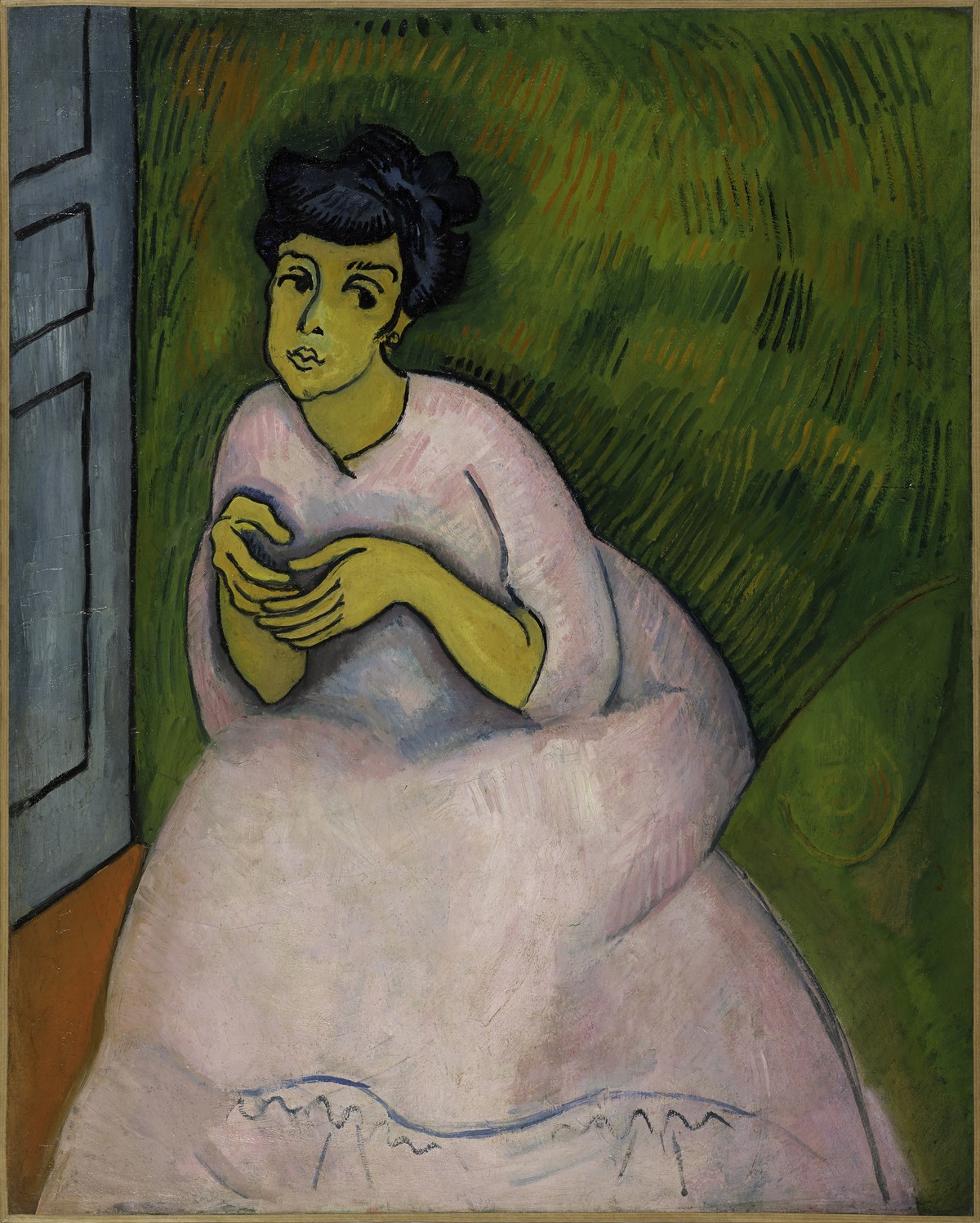
Lady in Pink, 1908, Oil on canvas, 81 × 65 cm
© Adagp, Paris
Crédit photographique : © Centre Pompidou, MNAM-CCI/Bertrand Prévost/Dist. RMN-GP
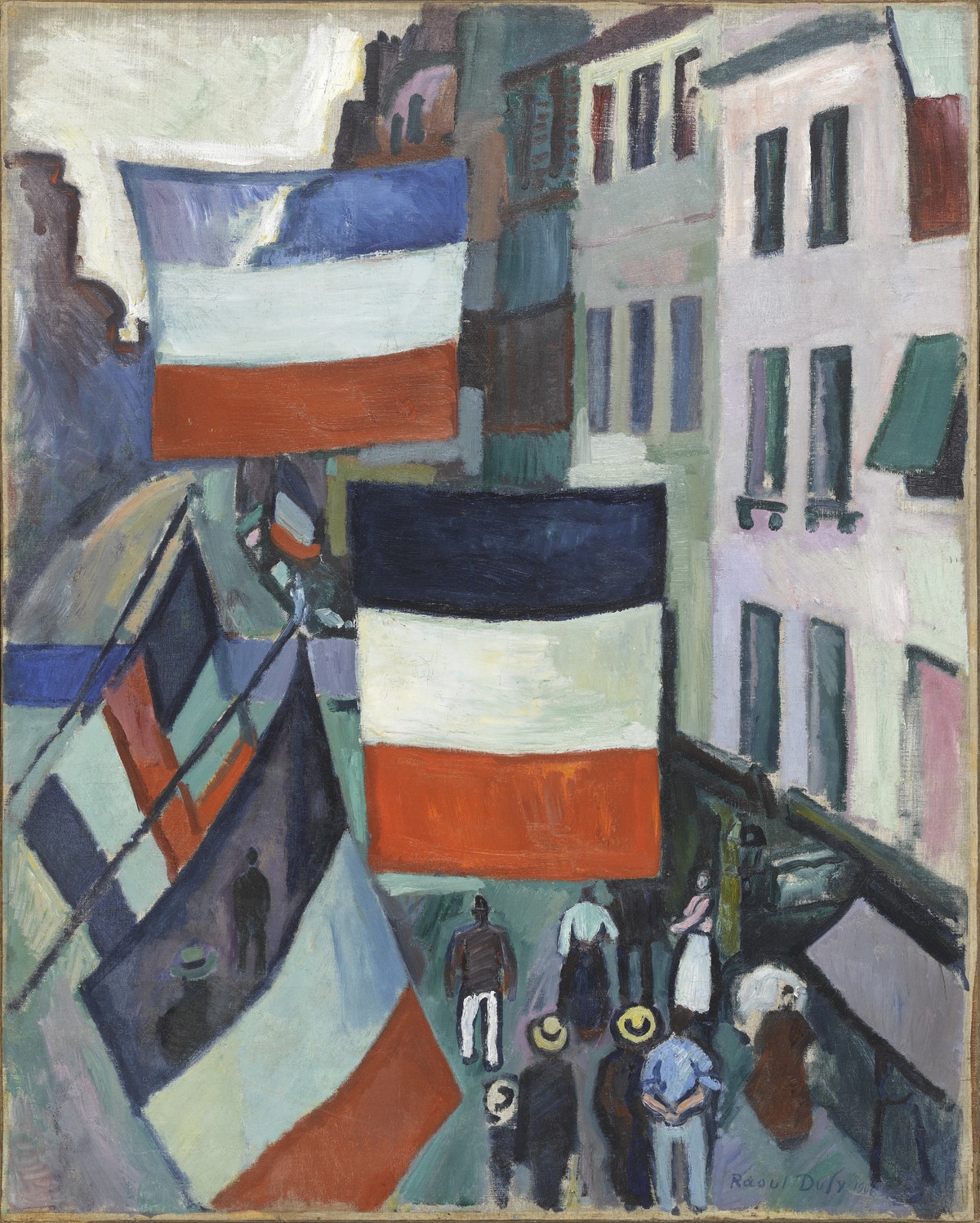
Beflagged Street in Le Havre, 1906, Oil on canvas, 81 × 65 cm
© Adagp, Paris
Crédit photographique : © Centre Pompidou, MNAM-CCI/Georges Meguerditchian/Dist. RMN-GP
With this project Raoul Dufy’s oeuvre, which is emblematic of a certain "French spirit" characterised by charm and joie de vivre and brought to life by a keen feeling for decor, is the subject of the artist’s very first retrospective in China.

